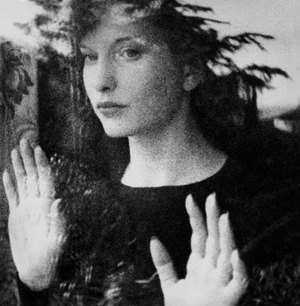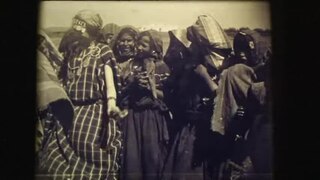
A documentary film or documentary is a non-fictional motion picture intended to "document reality, primarily for instruction, education or maintaining a historical record". Bill Nichols has characterized the documentary in terms of "a filmmaking practice, a cinematic tradition, and mode of audience reception [that remains] a practice without clear boundaries".

The cinema of Japan, also known domestically as hōga, has a history that spans more than 100 years. Japan has one of the oldest and largest film industries in the world; as of 2021, it was the fourth largest by number of feature films produced. In 2011, Japan produced 411 feature films that earned 54.9% of a box office total of US$2.338 billion. Films have been produced in Japan since 1897, when the first foreign cameramen arrived.

Maya Deren was a Ukrainian-born American experimental filmmaker and important part of the avant-garde in the 1940s and 1950s. Deren was also a choreographer, dancer, film theorist, poet, lecturer, writer, and photographer.

Lessons of Darkness is a 1992 documentary film directed by Werner Herzog. The film is an exploration of the ravaged oil fields of post-Gulf War Kuwait, decontextualized and characterized in such a way as to emphasize the terrain's cataclysmic strangeness. An effective companion to his earlier film Fata Morgana, Herzog again perceives the desert as a landscape with its voice.

Cinema of Africa covers both the history and present of the making or screening of films on the African continent, and also refers to the persons involved in this form of audiovisual culture. It dates back to the early 20th century, when film reels were the primary cinematic technology in use. As there are more than 50 countries with audiovisual traditions, there is no one single 'African cinema'. Both historically and culturally, there are major regional differences between North African and sub-Saharan cinemas, and between the cinemas of different countries.
Ed Guerrero is an American film historian and associate professor of cinema studies and Africana studies in the Department of Social and Cultural Analysis at New York University Tisch School of the Arts. His writings explore black cinema, culture, and critical discourse. He has written extensively on black cinema, its movies, politics and culture for anthologies and journals such as Sight & Sound, FilmQuarterly, Cineaste, Journal of Popular Film & Television, and Discourse. Guerrero has served on editorial and professional boards including The Library of Congress' National Film Preservation Board.
Michelle Citron is a film, video and multimedia artist, scholar and author.
James Naremore, born James Otis Naremore, is a film, English and Comparative Literature scholar based at Indiana University. Now retired, he retains the titles of Chancellors' Professor of Communication and Culture, English, and Comparative Literature at Indiana University Bloomington.

The Lincoln Motion Picture Company was an American film production company founded in 1916 by Noble Johnson and George Perry Johnson. Noble Johnson was president of the company, and the secretary was actor Clarence A. Brooks. Dr. James T. Smith was treasurer, and Dudley A. Brooks was the assistant secretary. The company is known as the first producer of race movies. Established in Omaha, Nebraska, the company relocated to Los Angeles the following year. It remained in operation until 1923, closing shortly after announcing a final project, The Heart of a Negro. The point of the creation of Lincoln's was to eliminate the stereotypical roles of "slapstick comedy" in Hollywood at the time for Black actors and actresses. "best advertised and most widely known Race Corporation in the world" is the famous slogan for the company.
Samuel Alexander O'Steen was an American film editor and director. He had an extended, notable collaboration with the director Mike Nichols, with whom he edited 12 films between 1966 and 1994. Among the films O'Steen edited are Who's Afraid of Virginia Woolf, Cool Hand Luke, The Graduate, Rosemary's Baby, and Chinatown.
Charlotte Zwerin was an American documentary film director and editor known for her work concerning artists and musicians. However, she is most known for her editing contributions to the direct cinema and cinéma vérité documentaries Salesman (1969), Gimme Shelter (1970), and Running Fence (1978) in which she was given co-director credits along with the two cinéma vérité pioneers Albert and David Maysles.
Manthia Diawara is a Malian writer, filmmaker, cultural theorist, scholar, and art historian. He holds the title of University Professor at New York University (NYU), where he is Director of the Institute of Afro-American Affairs.

Daoud Abdel Sayed is an Egyptian director and screenwriter. He was born in Cairo in 1946. He started as the assistant of Youssef Chahine in The Land. He made several critically acclaimed films, and won several international awards notably for The Land of Fear which was produced in 1999.
Documentary mode is a conceptual scheme developed by American documentary theorist Bill Nichols that seeks to distinguish particular traits and conventions of various documentary film styles. Nichols identifies six different documentary 'modes' in his schema: poetic, expository, observational, participatory, reflexive, and performative. While Nichols' discussion of modes does progress chronologically with the order of their appearance in practice, documentary film often returns to themes and devices from previous modes. Therefore, it is inaccurate to think of modes as historical punctuation marks in an evolution towards an ultimate accepted documentary style. Also, modes are not mutually exclusive. There is often significant overlapping between modalities within individual documentary features. As Nichols points out, "the characteristics of a given mode function as a dominant in a given film…but they do not dictate or determine every aspect of its organization."
Zeka Laplaine, sometimes credited as José Laplaine, is a director and actor from Ilebo in the Democratic Republic of the Congo. The child of a Portuguese father and Congolese mother, he moved to Europe when he was 18. His 1996 short film Le Clandestin was featured at the 2010 Amakula International Film Festival in Uganda. He portrayed a cowboy alongside Danny Glover in Death in Timbuktu, a film within a film in the Council of Europe Film Award-winning film, Bamako. Laplaine is a member of France's "Guilde Africaine des Realisateurs et Producteurs".
This is a list of reference works on documentary films.

Zohra is a 1922 silent 35 mm short film from Tunisia by Albert Samama ('Chikly'). It was the first indigenous North African film production. The movie script was written by Chikly's daughter, Haydée Chikly, who also edited and starred as the key female protagonist in the film.
The cinema of Gabon has had an uneven history. Though President Omar Bongo and his wife, Josephine Bongo, encouraged filmmaking in the 1970s, there was a 20-year hiatus until filmmaking started to grow again in the new millennium.
Cinema of Sudan refers to both the history and present of the making or screening of films in cinemas or film festivals, as well as to the persons involved in this form of audiovisual culture of the Sudan and its history from the late nineteenth century onwards. It began with cinematography during the British colonial presence in 1897 and developed along with advances in film technology during the twentieth century.
Roy Armes is a British professor emeritus and film scholar who has written numerous books on the history of filmmaking and select filmmakers.








